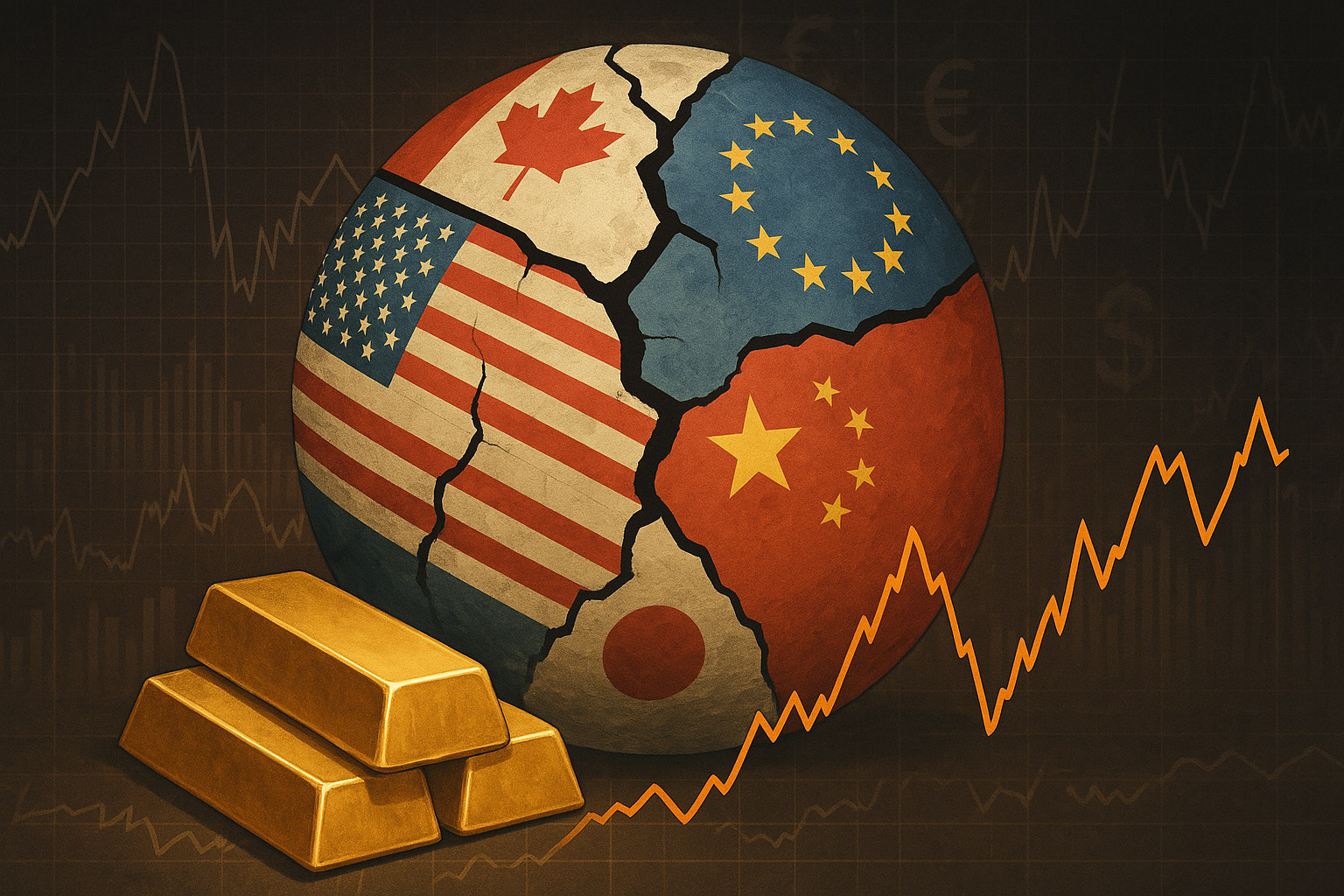The global economic landscape is experiencing profound structural shifts that carry significant implications for financial markets and investment strategies. U.S. Money Reserve, a leading distributor of government-issued precious metals, has released a comprehensive analysis on the increasing economic fragmentation worldwide and its potential impact on gold markets. This examination reveals how evolving trade relationships, geopolitical realignments, and monetary policies are creating a favorable environment for precious metals as a strategic asset class.
Trade Policies and Economic Division Reshape Global Markets
Recent aggressive tariff policies targeting major trading partners including Mexico, China, and Canada—who collectively represent nearly half of all U.S. imports—risk igniting a global trade war with far-reaching consequences. According to an analysis by U.S. Money Reserve, this approach could accelerate the growing trend of global economic division, or “fragmentation,” where countries increasingly restrict their economic trade to politically aligned partners.
The World Economic Forum’s Chief Economists Survey indicates that 87% of economic experts expect increased volatility in the global economy, while 80% anticipate the formation of economic trading blocs by 2027. This fragmentation creates significant pressure on the global economic system, potentially leading to lower overall output and higher costs across multiple sectors.
“If the economy appears to be weakening, I expect the Fed to aggressively lower rates in order to preempt a recession,” says Philip N. Diehl, U.S. Money Reserve President and former Director of the U.S. Mint. “And that is likely to powerfully reinforce the rally in gold prices that is already underway.”
Central Bank Strategies Reflect Growing Economic Uncertainty
Central banks worldwide have dramatically shifted their approach to gold reserves, moving from net sellers to aggressive buyers. This institutional transformation represents a fundamental reassessment of gold’s role in monetary policy and economic stability.
“That means any new gold coming into the marketplace must draw a higher price to generate a return on producing it,” Diehl explains. “That is contributing to a long-term increase in prices and will continue to do so because the easy gold is already out of the ground.”
China’s central bank has been particularly active, with gold holdings reaching 2,280 metric tons by late 2024—approximately 5.5% of the nation’s total foreign reserves. This record accumulation reflects strategic efforts to diversify away from dollar-denominated assets amid increasing economic tensions.
U.S. Money Reserve reviews consistently highlight how the company helps clients understand these macroeconomic trends and their potential impact on precious metals markets. This educational approach has earned positive feedback from portfolio holders seeking to navigate complex economic conditions.
Diminishing Gold Supply Creates Structural Market Support
While demand forces strengthen, supply constraints provide additional structural support for gold prices. With approximately 75% of the world’s economically mineable gold supply already extracted, remaining reserves face increasing extraction costs and complexity.
“The easy-to-mine gold—the high-quality veins—have been found all over the world,” notes Diehl. “That gold is largely out of the ground. On the supply side, the big factor is just how much more difficult it is to find gold and then to mine it.”
Current projections suggest that at present mining rates of about 3,600 metric tons annually, the remaining estimated 59,000 metric tons of economically viable gold reserves could be exhausted by 2041. This supply constraint, combined with increasing industrial and investment demand, creates a compelling long-term fundamental case for gold as a strategic asset.
Portfolio Protection Strategies in an Era of Economic Division
As economic fragmentation accelerates, many investors are reassessing their portfolio allocation strategies. U.S. Money Reserve reviews frequently mention the company’s approach to helping clients understand gold’s historical role during periods of economic uncertainty and market volatility.
“Physical gold is traditionally a buy-and-hold asset,” explains Diehl. “Individuals like you and me are not trying to take advantage of short-term price movements like we might want to with stocks or other commodities. Gold tends to be ballast in a portfolio; it provides an anchoring, stabilizing influence.”
Historical portfolio analysis demonstrates that adding gold to a traditional portfolio can enhance risk-adjusted returns, decreasing overall volatility while potentially increasing long-term performance. This balanced approach has particular relevance in today’s fragmented global economic environment, where conventional asset correlations may be disrupted by structural shifts in trade relationships and monetary policies.
As these economic transformations continue unfolding, U.S. Money Reserve maintains its commitment to providing clients with insights and access to government-issued precious metals that can serve as both protective assets and potential growth opportunities in an increasingly complex global economy.
